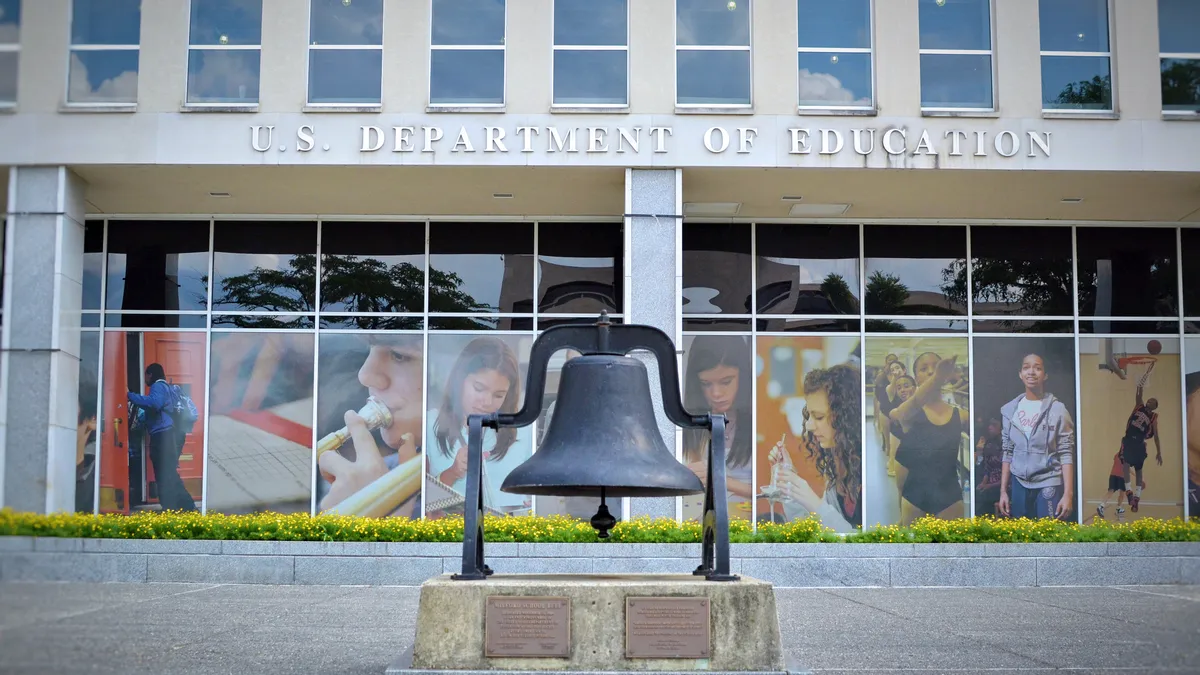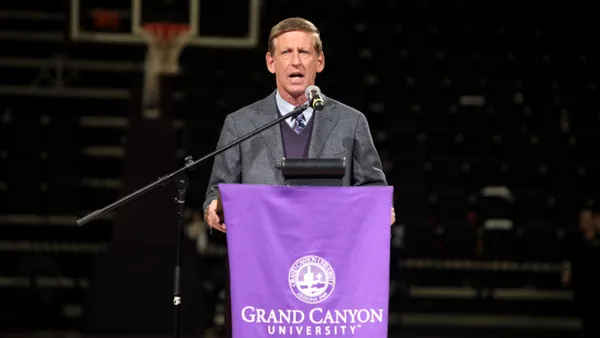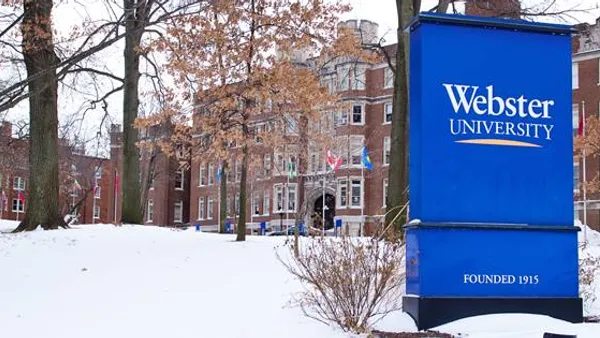Dive Brief:
- Total enrollment in the California Community Colleges system fell an estimated 15% year over year in 2020-21, representing an overall decline of about 319,000 students, a system representative told state lawmakers this week.
- The steepest declines were among African American, Native American and male students, as well as adult students, who are typically defined as age 25 or older. Among those aged 40 or older, total enrollment fell by more than 100,000 students.
- "I call out these specific categories to highlight our challenges and note that this is who the community colleges serve," David O'Brien, the system's vice chancellor of government relations, told state lawmakers. "These declines are highly worrying to us."
Dive Insight:
Enrollment within the California Community Colleges system has plunged below 2 million students for the first time in 30 years, EdSource reported. The system's latest data also reveals a steeper drop in students in the fall 2020 term than officials reported earlier this year.
The enrollment trends are "commanding the full attention of system and college leaders," Rafael Chávez, a system spokesperson, said in an email. They're exploring how to maximize student support by packaging financial aid, emergency grants and philanthropic support. And they're using state and federal support to forgive student debt, cover textbook costs, and provide child care stipends, laptops, hot spots and emergency housing vouchers.
Colleges are also hoping to reconnect with students, especially those of color, who were forced to leave school before finishing their credentials, Chávez said. Efforts include forgiving unpaid fees that may have accumulated during the pandemic.
The system additionally partnered with a contractor to design an outreach campaign for American Indian and Alaskan Native people featuring students from these communities.
California's enrollment woes are particularly severe, but they fit into nationwide trends.
Undergraduate enrollment dropped 3.4% in the fall of 2020 compared to the year before, according to data from the National Student Clearinghouse Research Center. Community colleges bore the brunt of those declines, with enrollment nosediving 9%.
Like California's data, national figures reveal that some of the steepest enrollment declines were among Black, Native American and male students. Preliminary data shows no signs that the enrollment declines are relenting, with the undergraduate population falling 3.2% year over year in fall 2021.
Other large states have seen similar trends. Texas saw community college enrollment decline 9.8% from fall 2019 to fall 2020, according to the state's higher education board. That drove an overall 4.1% decline in enrollment.
However, those declines appear to be slowing this fall, with community college enrollment declining by only 1% year over year, according to preliminary data.
The State University of New York system similarly saw a 9.9% year-over-year decline in community college enrollment in fall 2020. Preliminary system data for this fall shows further declines of 6.1%.
Enrollment declines have been uneven at different institutions, including within California. Los Angeles Southwest College, for instance, saw a nearly 18% decline in students from 2019 to 2020, according to district data. Yet nearby East Los Angeles College only saw a 6% dip.
Some of these trends may be due to demographic differences. For instance, Los Angeles Southwest College serves a much higher share of African American students than does East Los Angeles College.
"The numbers show in a really stark way that colleges that traditionally serve a higher proportion of African American students have been hit harder," said Tatiana Melguizo, an education professor at the University of Southern California.
To better recruit students, Melguizo suggested that leaders at California's community colleges tout recent initiatives they've undertaken. That includes work to implement guided pathways — which are meant to help students pick educational and career goals early on in college — and reforms to remedial education that enable more students to immediately enroll in credit-bearing courses.
"The community colleges now have to go out and get the students instead of taking them for granted," Melguizo said.














